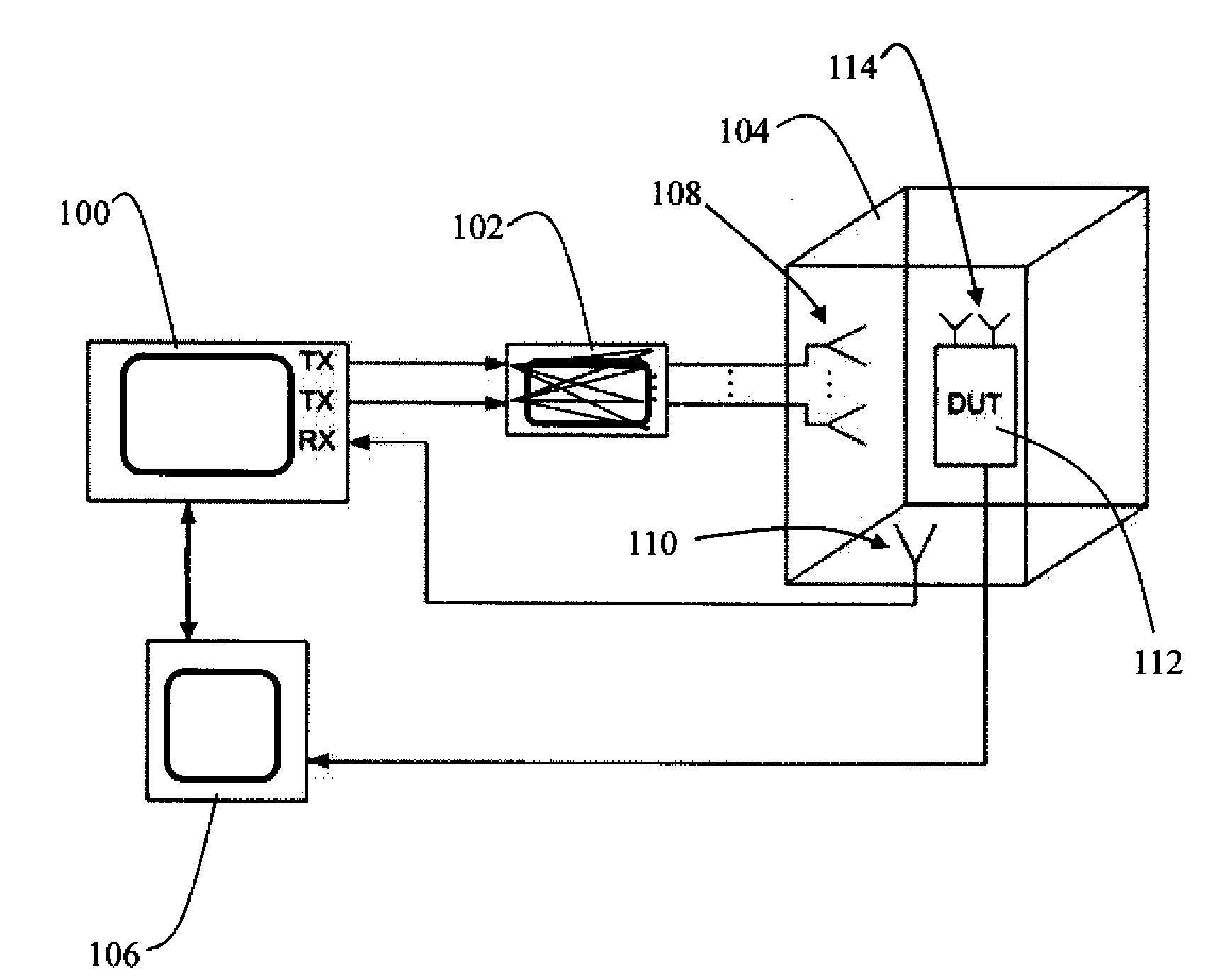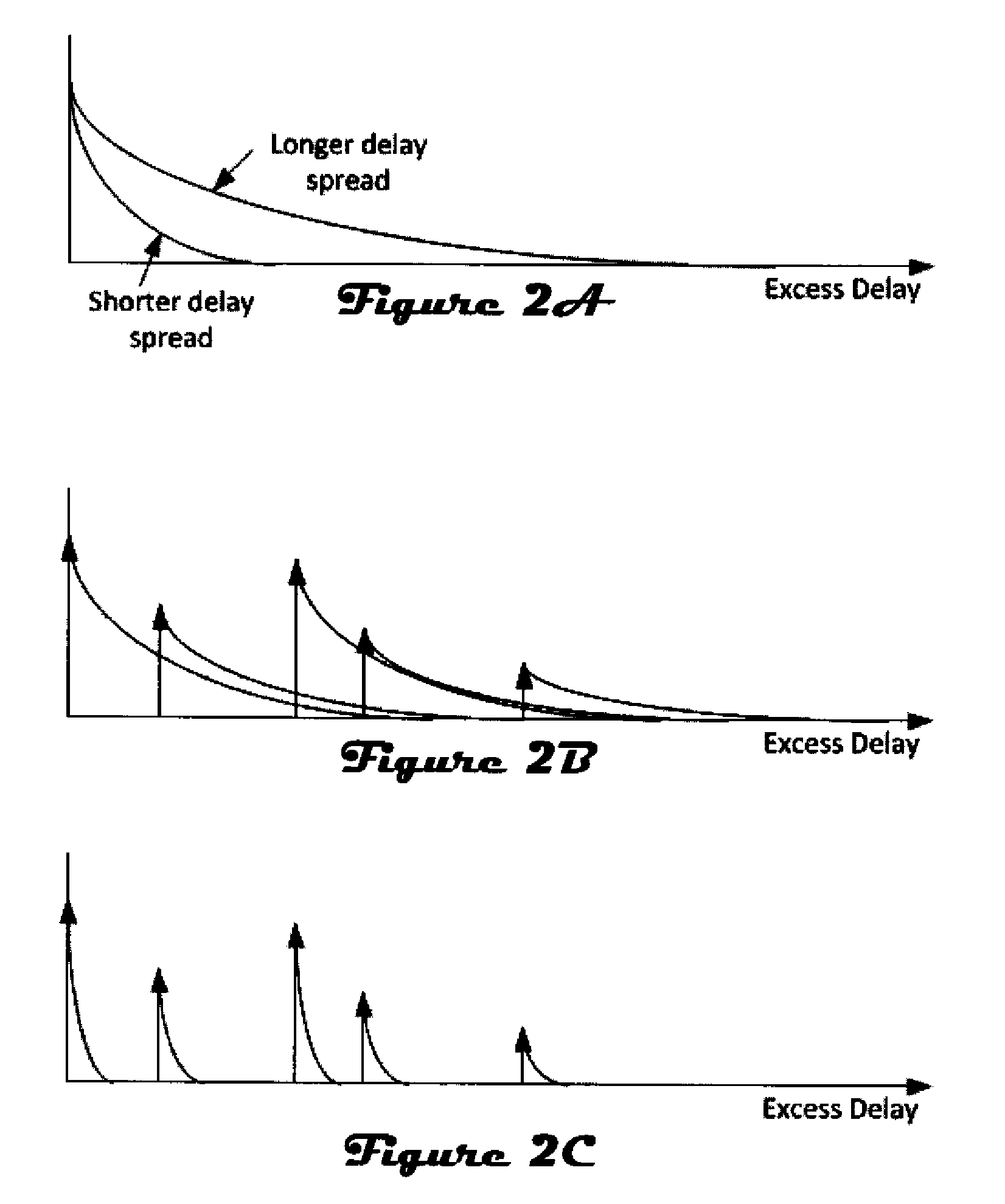Testing performance of a wireless device
a wireless device and performance testing technology, applied in the direction of pulse manipulation, transmission monitoring, pulse technique, etc., can solve the problems of failure to perform, difficulty in predicting the performance of wireless devices, and high cost of developing, purchasing, selling and deploying new wireless technologies or products, so as to achieve less cost, less time-consuming, and greater capability
- Summary
- Abstract
- Description
- Claims
- Application Information
AI Technical Summary
Benefits of technology
Problems solved by technology
Method used
Image
Examples
Embodiment Construction
[0020]Some aspects of the invention may be implemented by one or more computer programs. Such computer programs are stored in non-transitory computer-readable memory and executed by processing hardware in apparatus described below to perform functional steps such as those described below.
[0021]FIG. 1 illustrates an OTA test system in accordance with an embodiment of the present invention. The system includes a signal transmission emulator 100, a channel emulator 102, a test chamber 104, and a performance metric measurement module 106. The signal transmission emulator 100 transmits signals to the channel emulator 102. The channel emulator 102 operates on the signals from the signal transmission emulator 100 and transmits a corresponding output signal into the test chamber 104 via antennas 108. A sniffer antenna 110 associated with the test chamber provides a return signal from a DUT 112 to the signal transmission emulator 100, when necessary. Parameters captured from or by the DUT 11...
PUM
 Login to View More
Login to View More Abstract
Description
Claims
Application Information
 Login to View More
Login to View More - R&D
- Intellectual Property
- Life Sciences
- Materials
- Tech Scout
- Unparalleled Data Quality
- Higher Quality Content
- 60% Fewer Hallucinations
Browse by: Latest US Patents, China's latest patents, Technical Efficacy Thesaurus, Application Domain, Technology Topic, Popular Technical Reports.
© 2025 PatSnap. All rights reserved.Legal|Privacy policy|Modern Slavery Act Transparency Statement|Sitemap|About US| Contact US: help@patsnap.com



